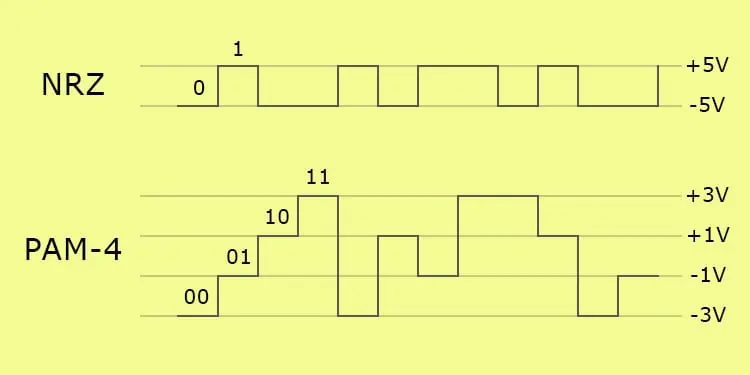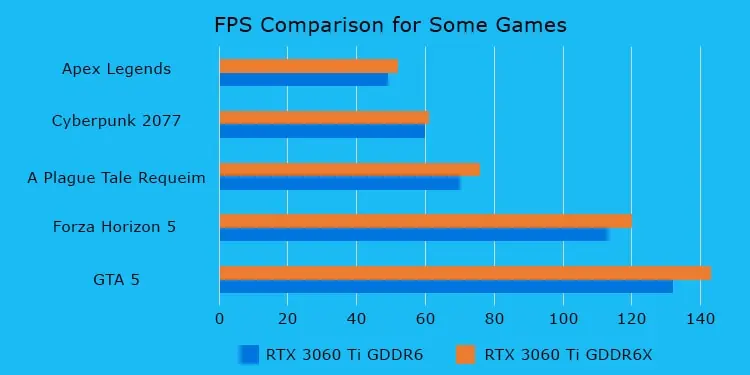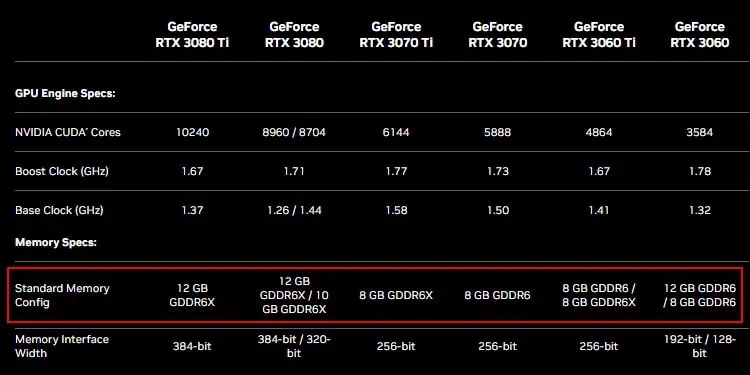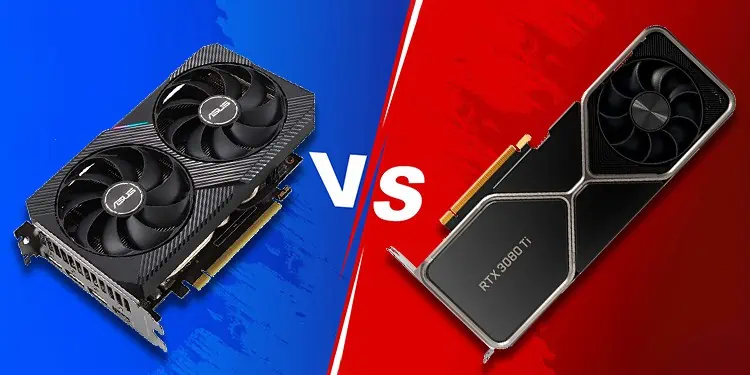Both GDDR6 and GDDR6X are the graphics synchronous dynamic random-access memory (SDRAM) on a Graphics Cards. You can also call them a synchronous dynamic random-access memory (SGRAM).
If you take off the heat sink on the graphics card, you can see the graphics processor (GPU) surrounded by many black rectangular chips. These are the SGRAMs on the GPU and they work as the RAM for the GPU.
Micron and NVIDIA joined forces to create GDDR6X, providing faster data transfer for high-end GPUs with over 6000 cores. However, now that NVIDIA has started using this component in lower-core GPU, such as the RTX 3060 Ti, it is worth knowing the differences between the two. This way you could make a better decision on which graphics card to buy.
What’s Different in GDDR6X?
There are not many distinctions between GDDR6 and GDDR6x. The fundamental difference comes from the encoding technology implemented in the devices. All other dissimilarities are simply a byproduct of this parameter.
Encoding
Before transferring data, the VRAM needs to encode it to prevent data loss. Unlike GDDR6, which uses NRZ (Non-Return to Zero), GDDR6 uses PAM-4 (Pulse Amplitude Modulation-4).

NRZ modulates data on two signal levels, high and low, represented by a positive and a negative or zero voltage respectively. So it can transfer one of two power levels at a time. Consequently, it means it can only transfer one Binary digit (bit) of data per clock pulse, either 0 or 1.
PAM-4 on the other hand enables devices to send one of four power levels at a single time by modulating data on four signal levels. So it can send two bits at a time, 00, 01, 10, and 11.
Bandwidth and Performance
The difference in encoding may not seem that important but in actuality, it determines the data transfer rate of the SGRAM. This is because the device transmits encoded data rather than raw data.
The GDDR6 SGRAM provides a per-pin bandwidth that maxes out at 16 Gigatransfers per second (GT/s). PAM-4 encoding raises this value to 19-21 GT/s bandwidth increasing the bandwidth by over 40%.
Now, to how this actually affects GPU performance, we need to first look at how these graphics SGRAMs work. These components store the graphic textures, frames, and shaders before sending them to the GPU cores for rendering. So, higher bandwidth always helps in faster rendering and increases frame rate.

However, this remains true only as long as the SGRAM contains data that it can push to the cores. If it doesn’t buffer enough data necessary for the whole rendering due to a lower SGRAM capacity or other reasons, you will still experience lags or stutters.
All the factors of the GPU, including the SGRAM collectively impact performance. But there’s no denying that if all the other factors are the same, GDDR6X provides better performance than GDDR6.
Power Consumption and Efficiency
Since GDDR6X can output two bits at once, as far as transmission is considered, it is more efficient than GDDR6. In general, GDDR6X uses 15% less power than GDDR6 to transmit each bit. However, since it is much faster, the total power consumption over a time period still exceeds that of GDDR6.
This increase in power consumption also leads to the GPUs with GDDR6X heating up more than those with GDDR6. So, you need better radiators with such devices.
Availability and Cost
As of now, only NVIDIA uses the GDDR6X SGRAMs on their graphics cards. All the GPUs starting from GeForce RTX 3070 Ti use GDDR6X and almost all prior models use GDDR6 or lower.

On October 19th 2022, however, NVIDIA launched GeForce RTX 3060 Ti graphics card with GDDR6X SGRAM. So, the only device where the difference in cost matters is this one. But there’s still a caveat. While the costs of Founder’s Edition GeForce RTX 3060 Ti and GeForce RTX 3060 Ti GDDR6X (provided directly by NVIDIA) are not that different, they were only available on the market for a limited time.
All the devices you find on the market afterward are those provided by PC or motherboard companies. As such, you’ll find a significant difference in the costs even between the same GPU. But generally, GDDR6X is slightly more expensive.
Do the Differences Matter? – Final Verdict
If you need to buy a new GPU GDDR6X is obviously the best choice over GDDR6 as long as all other specifications are the same. But since most GPUs have separate graphics SDRAMs, we actually recommend considering all their other aspects instead. For example, if you are worried about power consumption and don’t need the highest-end GPU, those with GDDR6 would be suitable for your use.
If you want to replace a GPU having a higher CUDA core count with a GPU that has GDDR6x SGRAM, it is generally not advisable. For instance, if we consider GeForce RTX 3060 Ti with GDDR6X and GeForce RTX 3070 with GDDR6, the 40% improvement in SDRAM bandwidth in GDDR6X does not come close to the performance provided by the additional 21% CUDA cores on RTX 3070.
The same case applies to SGRAM capacity vs speed. They are not mutually exclusive parameters and you can’t trade one for the other.
Also, there’s another thing you need to keep in mind. GDDR6X provides a marked improvement in memory speed over GDDR6. However, this speed is only useful if the 16 GT/s bandwidth of GDDR6 does not meet your computational requirements or causes bottlenecks. This is why all high-end NVIDIA GPUs like RTX 3080, 3090, or 40 series directly come with GDDR6x.
With all prior devices, the SGRAM doesn’t really need to reach about 16 GT/s speed in most situations. In such cases, the effective improvement in performance is quite minimal. So, even if NVIDIA someday decides to provide GDDR6X for other lower-end devices, switching to the improved counterparts is not worth the expense.
